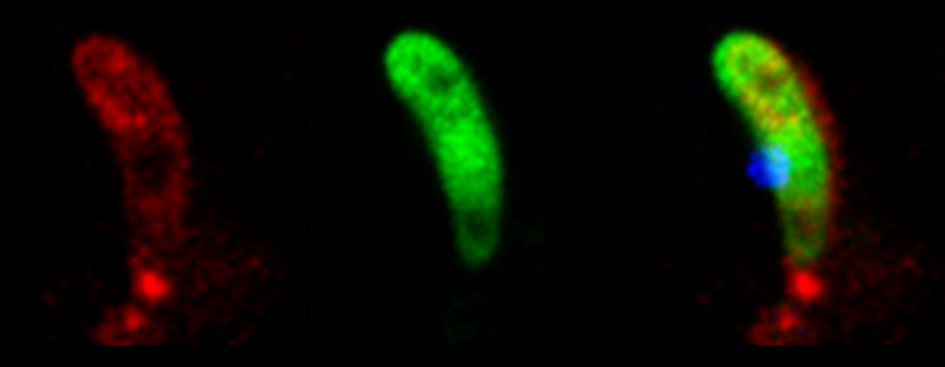New research by a team of UT researchers could provide a promising approach in the battle against malaria. In the research published in the scientific journal ACS Infectious Diseases, the researchers combat the malaria parasite in mosquitoes in a specific phase of their life. “It’s a unique approach: previous research focused predominantly on treatment in humans.”
Malaria is a major health problem all over the world. The disease is difficult to treat, partly because the parasites gradually develop resistance to drugs. The malaria parasite goes through many different stages of life, both in humans and in mosquitoes. Traditional treatment methods focus on combating the parasite in humans. But medical research like that takes a long time and has to meet extra strict requirements to safeguard the safety of the patient. Researchers also try to combat the mosquito with pesticides, but this leads to resistance in the mosquito.
Mosquito as patient
Consequently, researchers at research institutes such as TechMed Centre and MESA+ are focusing on treating the mosquito. “In principle, we regard the mosquito as a patient and try to treat it by attacking the parasite when it is in the ‘ookinete’ stage”, says lead author Dr Naomi Hamelmann. In that stage the parasite is a mobile small worm, around ten to fifteen of which are present in the mosquito. “That means in principle that malaria is easier to combat at this stage than at the various stages in humans, when there could be tens of thousands throughout the body.”
Nanoparticles
For the treatment, researchers created nanoparticles that each consist of a single polymer chain to which they could link a drug. “We use a single polymer per nanoparticle, which is subsequently tethered to itself, so the spherical particles that are then formed can be made both very small and very uniform. Every nanoparticle is exactly the same size”, associate professor Jos Paulusse explains.

Figure 1: In red the nanoparticle, in green a molecule (GFP) that only lights up in the parasite and in blue the nucleus of the parasite
Finding the parasite
In their research, the scientists show that it is possible to attack the parasite very precisely with the nanoparticles. “By allowing the nanoparticles to emit light we can show under the microscope that the nanoparticles find the parasite and enter it”, says Paulusse. Now that the nanoparticles are able to find the parasite very precisely, the next step is to find the right substance that can then kill the parasite in mosquitoes.
More information
The research, entitled ‘Single-Chain Polymer Nanoparticles Targeting the Ookinete Stage of Malaria Parasites', has been published in the scientific journal ACS Infectious Diseases. It is a collaboration between researchers at research institutes TechMed Centre and MESA+, the Institute for Bioengineering of Catalonia (IBEC), the Barcelona Institute for Global Health (ISGlobal) and the Nanoscience and Nanotechnology Institute (IN2UB) (all three in Spain), and the Institute of Molecular Biology and Biotechnology in Greece. The following are involved on behalf of the University of Twente: Dr. Naomi Hamelmann, Jan-Willem Paats MSc, and Dr. Jos Paulusse.





